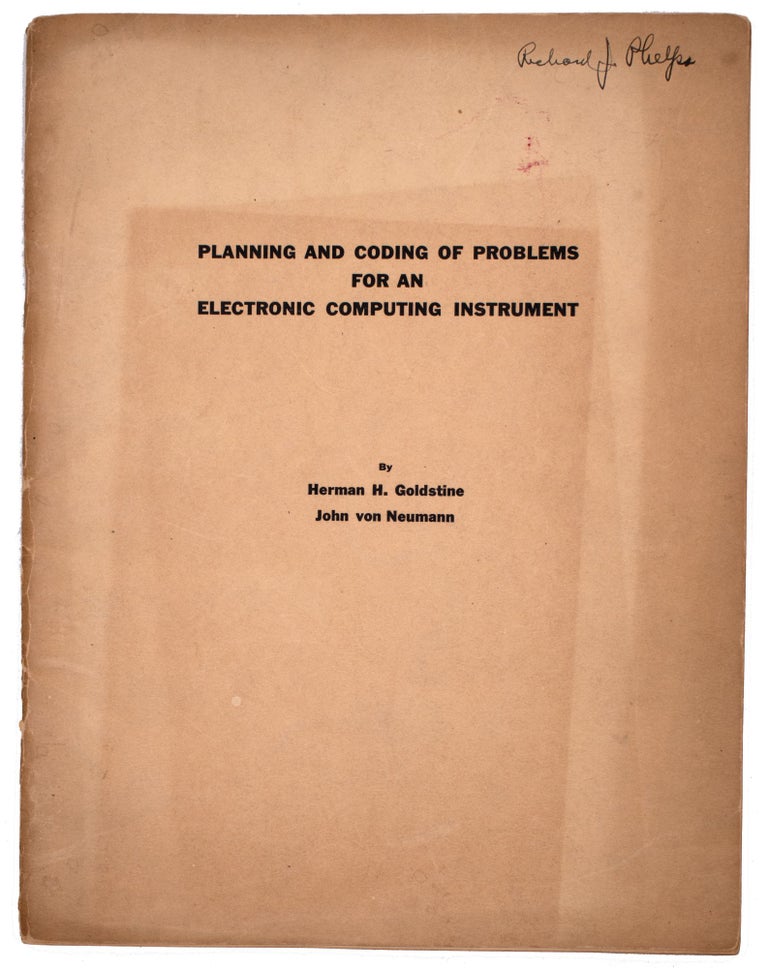
A Foundational Document in the History of Computing
Planning and coding of problems for an electronic computing instrument. Report on the mathematical and logical aspects of an electronic computing instrument Part II, Volume I.
Princeton: Institute for Advanced Study, 1947.
Price: $17,500.00
About the item
4to 8 1/2 x 11 inches (28 x 21.5 cm). A Foundational Document in the History of Computing. Publisher's buff stapled wrappers. Covers soiled and a bit worn, name on front cover (Richard J. Phelps), a few underlinings in color crayon etc. Origins of Cyberspace 959.
Item #333316
A foundational document in the history of computing, this visionary monograph articulates the procedures for the programming of a stored-program computer, well before such an instrument was available. It also describes for the first time the procedures for constructing flow diagrams, a conceptual tool that enables easy visualization of how the various parts of a program interact, and a technique that proved to have wide applicability outside of the field of programming. These "had an enormous impact, forming the foundation for computer programming techniques all over the world. The term 'flow diagram' became shortened to 'flow chart' and eventually it even became 'flowchart' - a word that has entered our language as both noun and verb" Knuth, "The Early Development of Programming Languages," in A History of Computing in the Twentieth Century p. 208). On the impact of the paper overall "...The authors point out that in the execution of orders, the computer does not simply pass through them a single time in a linear fashion. To gain its full flexibility, the computer must be able to execute transfer orders (which allow it to jump backward or forward to some specified place in the instruction sequence) and substitution sequences (which allow the coded sequence of instructions to be modified in the course of a computation), and these changes may be conditioned on the results obtained earlier in the computation. They described programming as involving two aspects: writing the static code that is entered into the machine and understanding the dynamic process by which the machine executes these orders ... To aid in this dynamic analysis Goldstine and von Neumann invented a logical tool known as a flow diagram: a labeled graph for tracking the dynamic flow as the computer executes orders and changes values of variables." Aspray John von Neumann p. 69 et seq.

